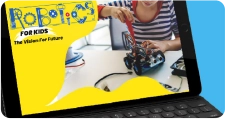

Sanjay Chetwani
Design Thinking Process At Moonpreneur – What You Need To Know
Design thinking in nutshell is about trial and error, disappointment, even outright failure on the outside, and empathy. It is also a deep long-lasting learning, and a whole new way of ‘thinking (obviously!)’ on the inside. Despite the former, the latter is what really matters to our individual and collective progress as young and adults.
It’s a process, a way of going about tinkering, sometimes leading to building something of significance, and other times, not really! At Moonpreneur, it’s about sketching your idea, via mental notes, a diagram, a formula, a circuit, lines of code or any other contraption our juniors imagine and then us guiding them along the way. We don’t claim to innovate ourselves or our students, but rather we consider ourselves as a team around which any young mind can feel safe to ideate, prototype, build (and fail and build again), test, and repeat until the outcome meets the problem in a most optimal way.
The tenet we follow and remind our students is really centered around a realization that entrepreneurs are the byproduct of attention to details, putting the soul into otherwise abstract problems and solutions and equally importantly bringing out what Steve Jobs called ‘Friendliness’ in whatever you build or innovate.
Design Thinking has Five stages:
1. Empathize Understand what your audience wants and what their values are. Once you know these, you empathize and come up with solutions rather easily.
2. Define Once you’re able to empathize with your audience, you need to make sense of your findings. What difficulties does your audience face? Once you’ve defined the problem, you can move to stage 3.
3. Ideate In this stage, you come up with exciting ideas to solve the problem. You think of new angles and interesting approaches before settling for the best.
4. Prototype Now that you have your ideas, it’s time to sit down to prototype. This means creating an example of the product.
5. Test In the final stage, you test the prototype. You decide what should change based on the test results and the feedback you receive.
While taking them through the tested-and-tried process of design thinking, our students not only gain valuable experience, but appreciate the value of decision making, developed communication, confidence, broadened perspective, and problem-solving. We challenge them to garner and apply at the same time the entrepreneurial approach to relating with the users of end products they build or innovate.
The method we use involves a balance between massive amounts of brainstorming and independent (yet guided) research that untaps our students imagination. The dramatic shift then surfaces by itself in how our Moonpreneur platform users not only build, innovate, and market but also transform in their style of approaching everything from school, college, sports, and life at large. We believe today’s challenges and tomorrow’s formidable questions need nothing less to tackle.









